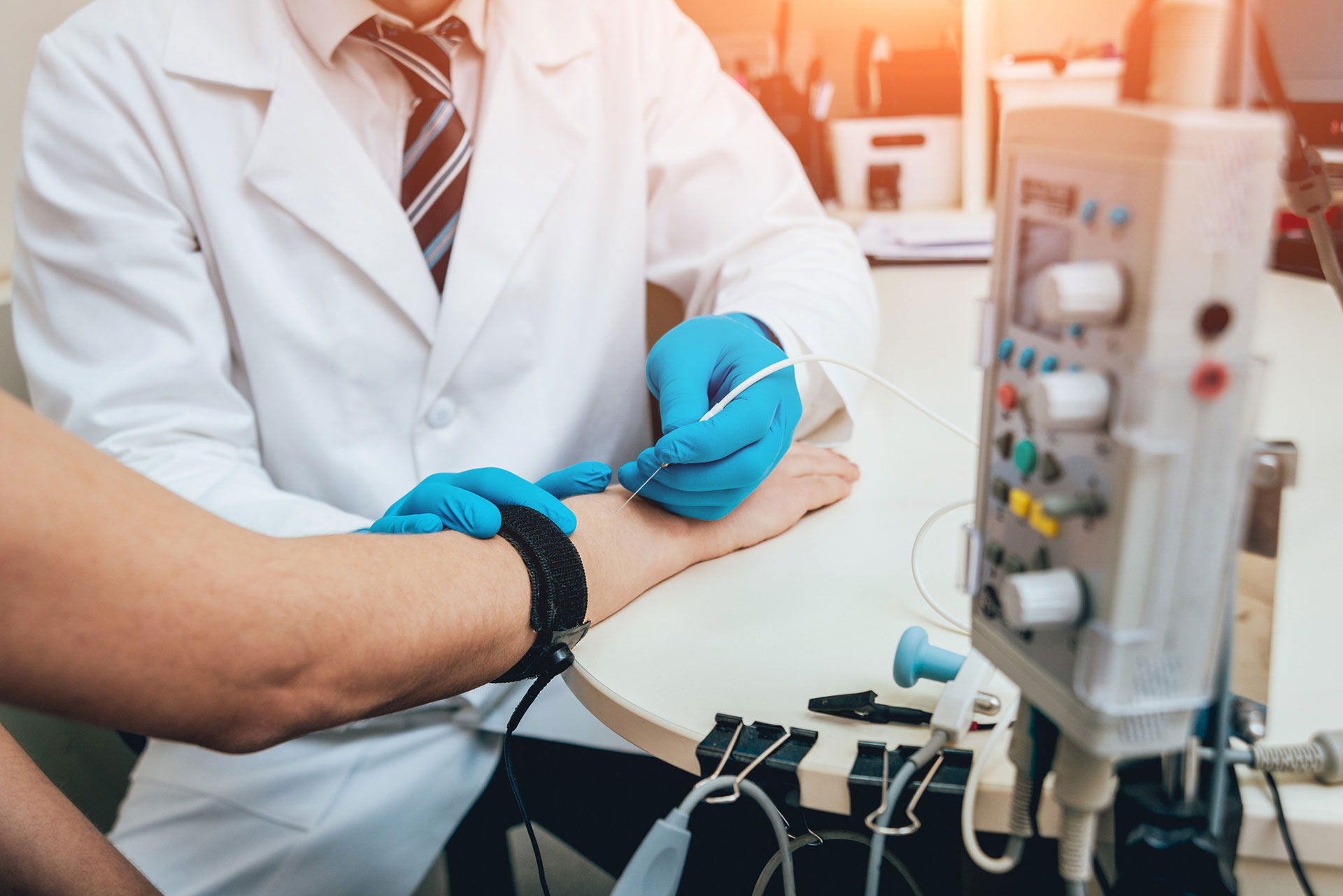Electromyography/ Nerve Conduction Studies (EMG/NCS)
Electrodiagnostic testing studies evaluates the electrical activity of nerves and muscles to determine if nerves (and sometimes muscles) are functioning normally, i.e., healthy, or not. The results of these studies can help diagnose pain in the back, arms and legs, particularly if accompanied by numbness and tingling and especially weakness. Common nerve problems that these studies can help diagnose include radiculopathy (spinal nerve irritation or injury that leads to symptoms in the arms or legs with or without weakness), nerve entrapments (such as carpal tunnel syndrome, cubital tunnel syndrome, tarsal tunnel syndrome, peroneal nerve entrapment, etc.), foot drop and weakness in the arms and legs. Confounding conditions such as a common peripheral neuropathy can be identified or excluded as a problem. Like any diagnostic testing, the results often need to be interpreted considering other clinical information such as a patient’s history and physical exam findings and any pertinent imaging or MRI findings.
There are two parts to electrodiagnostic testing:
- Nerve Conduction Studies – These studies take advantage of the fact that nerves work based on electricity, normally generated by the brain and other internal structures. Select nerves are stimulated at different points through the skin, artificially activating them so their function can be measured. To accomplish this, electrodes are attached to the skin’s surface, such as in the arm, then small electrical currents are applied (which may feel uncomfortable but should not cause pain).
- EMG needle exam for muscle testing – Very fine Teflon-coated needles are inserted into several muscles. Each needle acts like an antenna that picks up both the normal and abnormal electrical signals given off by a muscle and displayed on an oscilloscope. Certain abnormal electrical waves may signify abnormalities of the corresponding nerves to these muscles.
These tests are often tailored to each patient and can vary from patient to patient, based on what your physician thinks needs to be done. Both procedures are usually done.

What does EMG stand for?
EMG is a term for “ElectroMyoGraphy,” meaning “an electrical picture of muscle.” Often EMG is used as a shortcut to designate both nerve conduction studies and EMG needle exam.
Why is the EMG being done?
Based on the patient’s history and physical exam, the clinician suspects nerve irritation or injury. This injury could be the result of a pinched or inflamed nerve. The EMG will guide the clinician in making a specific diagnosis or in excluding any serious problem. The results should aid in determining better treatment.
How should patients prepare for an EMG?
Patients should avoid using skin lotions on the day of the study since it may interfere with tape that is used to secure the electrodes to the skin. Patients should make the performing physician aware of pacemakers or neural stimulators, since this may alter how some of the exam will be done. There is no need to stop blood thinners.
How long does the procedure take?
Electrodiagnostic testing is done in our office and generally will take 30-45 minutes to complete, although complex studies may take up to an hour. Most of the time is spent setting up the various parts to the study, while the actual testing is very brief.
Does the EMG hurt?
Pain is a very personal experience and differs from individual to individual. An EMG is like a visit to the dentist. There is brief discomfort associated with the quick electrical shocks during NCS. Cramping of muscles can occur during the pinpricks of the needle EMG. The discomfort of the tests, though unpleasant, is tolerable and brief.
